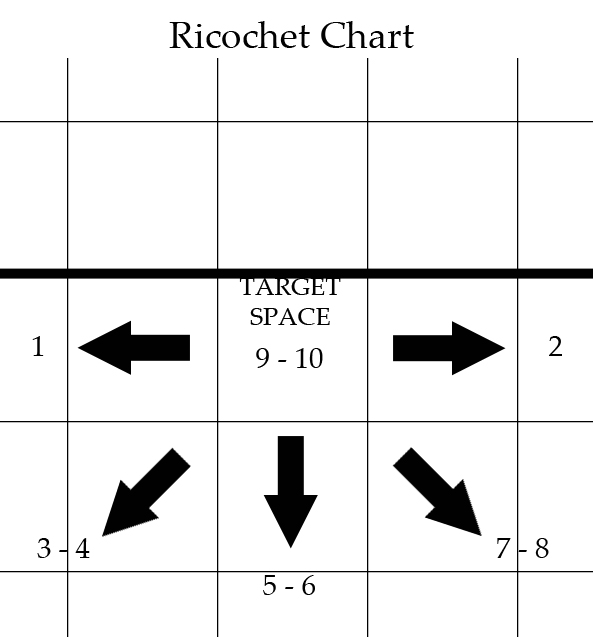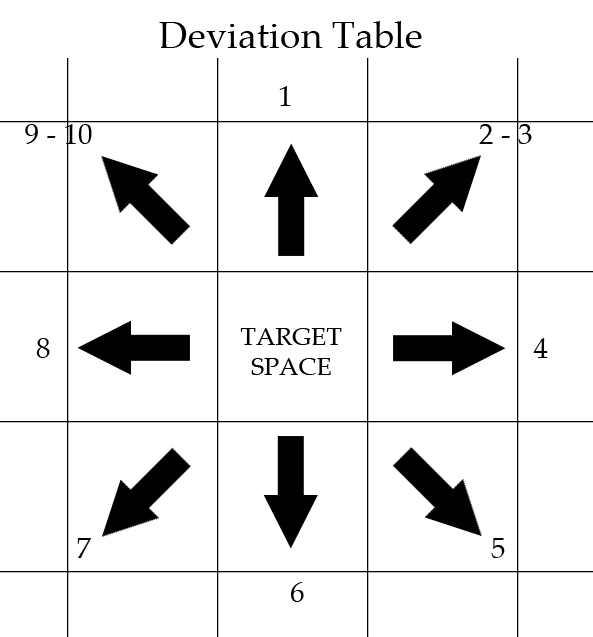Fumbling a Ranged Attack
Placement of a ranged attack matters. Sometimes, it matters more than other times, especially when a ranged attack is highly critical, either to damage something specific, or to leave specific things in the environment unharmed. If the attack misses, it can be difficult to determine exactly what happens. In most other systems, this determination is handled with a Ranged Attack Deviation Chart, and that is something that has been lacking in the Æther system, until now.
Generally these rules are consulted when either thrown or launched weapons or items are being used. Some Narrators may wish to use it for any given ranged attack that misses, which will make players much more cautious when firing into tight spots or bad situations. For some spells, supernatural abilities, and other attacks that require a ranged attack roll, the Narrator may choose to use these rules as well, but that is extremely optional.
The Deviation chart comes into play in the following circumstances. Consult these guidelines any time an applicable ranged attack misses its mark.
Attack Would have Succeeded…
Sometimes the attack would have hit if the target was in the open. However, cover bonuses and other modifiers like Dodge can increase the attack roll difficulty beyond the player’s roll and the character’s modifiers. In that case, the ranged attack should act accordingly, either sailing past the target if it was dodged, or striking the cover if that was the deciding factor. The Narrator has a lot of leeway to make in situations like this, including whether or not the attack bounces back off the target and how far. In attacks with weapons such as sticky-grenades or RPGs, striking the cover may have the same effect as what the attack intended in the first place, but if they sail past the target, the consequences could be dire.
For attacks that bounce off the target, the Narrator may consult the following chart. Roll a single D10 and figure out how far back the attack bounces. Most of the time, the attack should still be within 5 to 10 feet of the target. Some attacks may bounce further, depending on what is being used to attack.
Attack Missed Completely
The dice simply aren’t with you today, or maybe the shot needed to be one-in-a-million and it just wasn’t your lucky day. This is where the Deviation chart comes in to play. The Narrator makes two rolls. The first is to determine the direction the attack went, using the intended target as a center point.
The second roll is to determine how far off it is. Sometimes, close is close enough, other times that may not be the case. The Narrator needs to roll another D10, multiply the result by five, and the result is the number of feet that the shot is off. No matter what the result is, the deviation cannot be greater than the maximum range of the weapon (if any).


